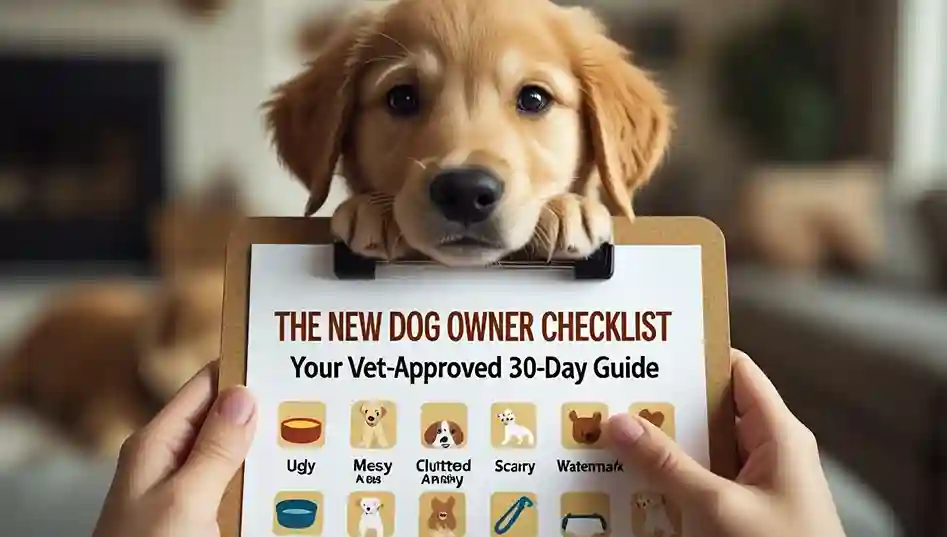The journey of understanding dog behavior is one of the most rewarding aspects of sharing your life with a canine companion. While a wagging tail often means joy and a low growl signals a warning, the vast vocabulary of canine communication is far more nuanced. True understanding of dog behavior goes beyond simply managing actions; it’s about learning to interpret the subtle signals your dog uses to express their needs, fears, and instincts.
Many common challenges—from excessive barking to destructive chewing—stem from a simple gap in communication. This guide is designed to bridge that gap. We’ll move past the frustration and provide you with a clear, expert-backed framework for understanding dog behavior, decoding body language, and applying positive, effective solutions. Let’s begin the journey to a deeper, more harmonious bond with your best friend.
Key Takeaways at a Glance
Before we dive deep into understanding dog behavior, here are the most essential insights. These core principles will transform how you interpret your dog’s actions and form the foundation of everything we’ll cover.
Behavior is Communication
Every action, from a bark to a chew, is your dog’s way of communicating a need or emotion. True understanding dog behavior starts with seeing them as attempts to “talk” rather than acts of disobedience.
Master the Three C’s of Body Language
Pay closest attention to Eyes, Ears, and Tail. These are the most reliable indicators of your dog’s emotional state. For a complete guide to interpreting these and other signals, see our deep dive on dog body language.
Instincts Drive Action
Many behaviors that seem confusing, like digging or circling before lying down, are hardwired instincts. A crucial part of understanding dog behavior is recognizing these innate drives.
Positive Reinforcement is the Key
The most effective and humane way to shape behavior is to reward what you like and redirect what you don’t. This approach is central to modern understanding of dog behavior and training.
Keep these principles in mind as we explore the details. They are the shortcut to understanding dog behavior on a deeper level.
The Foundation: Decoding Canine Body Language
True communication with your dog begins not with words, but with observation. Canine body language is a complex system of silent signals, and learning to interpret it is your most powerful tool for understanding your dog’s behavior. By recognizing these cues, you can respond to their needs before a situation escalates, building a relationship rooted in trust and mutual understanding.
The Signs of a Happy, Relaxed Dog
A content dog has a soft, fluid posture. Look for a gently wagging tail held at a neutral height, soft and squinty eyes, a slightly open mouth with a lolling tongue, and ears that are in their natural, relaxed position. This is the baseline state of a comfortable canine.
Common Stress & Anxiety Signals
Often missed by owners, these subtle cues are critical for interpreting your dog’s emotional state. Key signs include “whale eye” (when the whites of the eyes are visible), frequent lip licking or yawning when not tired, pinned-back ears, a low or tucked tail, and a stiff body. This calming signal is often misunderstood; learn more about what does it mean when a dog yawns?
Signs of Fear, Tension, or Aggression
When a dog feels threatened, their body becomes rigid and telegraphs a clear warning. A hard, fixed stare can be a warning signal. However, not all staring is aggressive. A dog may also stare out of love, anticipation, or a desire for something. We decode the intent behind this common behavior in our article, why does my dog stare at me?
The “Why” Behind Common Dog Behaviors
Once you can read your dog’s body language, the next step in understanding dog behavior is uncovering the motivation behind their actions. What we often label as “bad” behavior is usually a natural instinct or an attempt to meet a need. Let’s decode some of the most common actions to help you see the world from your dog’s perspective.
Why Do Dogs Bark?
Barking is a primary form of canine communication. It’s not a single behavior but has many meanings, including:
- Alert/Warning: To notify you of something unusual.
- Boredom/Loneliness: A sign of under-stimulation, often seen in dogs left alone for long periods.
- Attention-Seeking: A learned behavior that gets them what they want, like play or food.
- Anxiety: A distress signal, common in dogs with separation anxiety.
Why Do Dogs Chew?
Chewing is a completely normal dog behavior for all ages. For a detailed guide on managing this behavior and choosing the right chew toys, see our article on dog chewing.
- Puppies: Explore the world and soothe teething gums.
- Adult Dogs: Relieve boredom, reduce anxiety, or simply because it’s enjoyable.
- Solution: Provide plenty of appropriate, durable chew toys and puppy-proof your home.
Why Do Dogs Dig?
This instinctual common dog behavior can be frustrating for gardeners. Motivations include:
- Instinct: Terriers and other breeds were bred to dig out prey.
- Comfort: Digging a hole can create a cool spot to lie in.
- Boredom or Anxiety: An outlet for pent-up energy or stress.
- Prey Drive: Following the scent or sound of a burrowing animal.
Understanding these root causes is the key to effectively addressing them with patience and positive solutions, rather than frustration.
Why Do Dogs Get the “Zoomies”?
These sudden bursts of energy, known as Frenetic Random Activity Periods (FRAPs), are a normal way for dogs to release pent-up energy or relieve stress. To understand when zoomies are normal and when to be concerned, read our article on dog zoomies.
How Breed Helps in Understanding Dog Behavior
A powerful yet often overlooked lens for understanding dog behavior is through the prism of breed. Every dog is an individual, but their genetic blueprint—developed over centuries for specific jobs—profoundly influences their instincts, energy levels, and what they find rewarding. Recognizing these innate tendencies allows you to work with your dog’s nature, not against it.
The Herding Group (e.g., Border Collie, Australian Shepherd)
Bred to control the movement of other animals, these dogs often exhibit strong instincts to chase, circle, and even gently nip at heels (including children’s heels during play). Understanding this dog behavior means providing them with structured outlets like agility, fetch, or treibball to satisfy their “herding” needs.
The Sporting Group (e.g., Labrador Retriever, Golden Retriever)
Developed to work closely with hunters, these breeds are often highly trainable, energetic, and possess a “soft mouth” for carrying objects. A common dog behavior is carrying toys, shoes, or other items, driven by their retrieving instinct.
The Terrier Group (e.g., Jack Russell Terrier, Scottish Terrier)
Bred to hunt vermin, terriers are typically tenacious, fearless, and have a high prey drive. Understanding this behavior involves recognizing their propensity to dig, bark at small animals, and be more independent-minded.
The Working Group (e.g., German Shepherd, Doberman Pinscher)
These dogs were bred for jobs like guarding and pulling. They are often intelligent, loyal, and require a sense of purpose. Without proper training and mental stimulation, common dog behaviors can include protective barking and destructiveness born from boredom.
By appreciating your dog’s heritage, what might seem like a frustrating habit can be reframed as a natural instinct seeking an outlet. For a deeper dive into specific traits, our Best Dog Breeds guide offers detailed profiles.
The Positive Reinforcement Framework: What to Do Next
Now that you’re understanding dog behavior on a deeper level, the next question is: what do you do with this knowledge? The most effective and humane approach is the Positive Reinforcement Framework. This method focuses on rewarding the behaviors you want to see, rather than punishing the ones you don’t. It builds trust and strengthens your bond while effectively shaping your dog’s conduct.
Step 1: Identify the Motivation.
Before you can address a behavior, you must understand its root cause. Use your knowledge from earlier sections to ask: Is this dog behavior driven by boredom, fear, a specific instinct, or a desire for attention? For example, a dog chewing the furniture might be bored (need more stimulation) or anxious (need for comfort).
Step 2: Manage the Environment.
Set your dog up for success by preventing the unwanted behavior from happening. This is a crucial part of understanding dog behavior and being a proactive owner. If your dog chews shoes, put them away. If they bark at people passing the window, close the blinds or use a window film. Management prevents your dog from practicing bad habits.
Step 3: Redirect and Reward.
This is the active training component. When you see your dog about to engage in an unwanted behavior, redirect them to an acceptable alternative and reward them generously for it. This is key to understanding and modifying dog behavior. If they start to dig in the yard, call them to a digging box or to play with a toy and reward them for complying. If they sit calmly instead of jumping on a guest, shower them with treats and praise.
This simple, three-step framework empowers you to humanely guide your dog, transforming your understanding of their behavior into positive action.
When to Seek Professional Help for Behavior Issues
While understanding dog behavior empowers you to handle many situations, some issues are complex and potentially dangerous. Knowing when to call a professional is a critical part of responsible ownership. Seeking timely help is not a failure; it’s a commitment to your dog’s well-being and your family’s safety. If you observe any of the following, it’s time to consult a certified professional dog trainer or a veterinary behaviorist.
Signs of Aggression:
This includes growling, snapping, lunging, or biting directed toward people or other animals. This is the most urgent reason to seek help, especially if the behavior is escalating. A professional is essential for safely understanding this severe dog behavior and implementing a management and modification plan.
Severe Anxiety and Phobias:
If your dog exhibits extreme distress during storms, fireworks, when left alone (resulting in destruction or self-injury), or in specific situations, a professional can provide a structured desensitization program. This goes beyond general understanding of dog behavior and requires specialized expertise. For anxiety calming aids as a potential tool alongside professional help.
Resource Guarding:
While mild guarding can sometimes be managed, intense behavior where a dog stiffens, growls, or snaps over food, toys, or sleeping areas requires professional intervention to prevent a bite.
Any Behavior That Feels Overwhelming:
If you feel stuck, frustrated, or afraid, that is a valid reason to seek help. A professional can provide support, clarity, and a tailored plan, helping you move from just understanding the dog behavior to effectively resolving it.
You can find certified experts through organizations like the Certification Council for Professional Dog Trainers (CCPDT) or the International Association of Animal Behavior Consultants (IAABC).
Expert Insights: A Trainer’s Top 3 Tips
To solidify your journey in understanding dog behavior, we’ve condensed key wisdom from professional dog trainers into three powerful, actionable tips. These principles will help you apply everything you’ve learned effectively and humanely.
1. Be a Detective, Not a Judge.
The most important skill in understanding dog behavior is curiosity. When your dog acts out, ask “why?” instead of reacting with “no!” Is he barking at the door because he’s scared or excited? Is she chewing the remote because she’s teething or anxious? Identifying the root cause is 90% of the solution. This shift in perspective is fundamental to truly understanding your dog’s behavior.
2. Consistency is Your Superpower.
Dogs learn through clear, predictable patterns. If jumping gets attention sometimes but gets ignored other times, your dog will keep trying. Everyone in the household must respond to behaviors the same way every time. This consistency helps your dog feel secure and accelerates learning, making your effort in understanding dog behavior much more effective.
3. Meet All Their Needs – Mental and Physical.
A tired dog is a good dog, but mental exercise is just as crucial as physical walks. Incorporate training games, food puzzles, and sniffing walks into your routine. A mentally stimulated dog is less likely to develop destructive behaviors out of boredom. This proactive approach is the ultimate application of understanding dog behavior – preventing problems before they start.
Dog Behavior FAQ
Here are clear, concise answers to the most common questions we encounter about understanding dog behavior. This FAQ is designed to address those lingering curiosities and concerns.
Why does my dog follow me everywhere?
This “velcro dog” behavior is usually a sign of a strong bond and a desire to be near you, their pack leader. It can also be a sign of boredom or, in some cases, underlying anxiety when alone.
What does it mean when a dog licks you?
Licking is a multi-purpose dog behavior. It can be a sign of affection, a submissive gesture, a way to solicit attention or food, or simply because your skin tastes salty. For a more detailed breakdown of all the reasons—from affection to anxiety—check out our full article exploring why do dogs lick you?
How can I tell if my dog is truly happy?
Look for a relaxed body posture, a soft facial expression with slightly squinty eyes, a gently wagging tail, and a willingness to play or relax comfortably in your presence. These are the core signs of a content dog that you’ll recognize through understanding dog body language.
When should I be concerned about my dog’s behavior?
Any sudden, dramatic change in behavior, signs of aggression (growling, snapping), extreme anxiety, or behaviors that cause injury to themselves or damage to property warrant a consultation with your veterinarian or a certified professional dog trainer.
This FAQ for understanding common dog behaviors helps bridge the gap between observation and comprehension.
Final Thoughts
The journey of understanding dog behavior is a continuous and deeply rewarding process. It transforms the relationship with your canine companion from one of potential frustration to a fulfilling partnership built on mutual understanding and trust.
Remember, there are no “bad dogs,” only behaviors we haven’t yet learned to interpret. By observing patiently, applying positive reinforcement consistently, and knowing when to seek expert guidance, you are well on your way to becoming the confident, insightful owner your dog deserves.
Article Sources and Verification
At AvailPet, we are committed to providing accurate, evidence-based information. Our articles are thoroughly researched and written by pet care enthusiasts, then reviewed and verified by a team of dedicated pet owners and researchers to ensure they meet our high standards for accuracy and integrity. We utilize a combination of the following sources:
- Interviews with Certified Professionals: Insights from certified dog trainers and veterinary behaviorists.
- Reputable Institutions: Guidelines from the American Veterinary Society of Animal Behavior (AVSAB) and other leading animal welfare organizations.
- Peer-Reviewed Veterinary Journals: For scientific claims regarding animal behavior and cognition.
- Authoritative Texts: Renowned books and publications on canine ethology and positive reinforcement training.
Full Disclosure: This article may contain affiliate links. If you make a purchase through these links, we may earn a commission at no extra cost to you, which helps us continue to provide valuable content. Read our full Disclaimer for more information.






